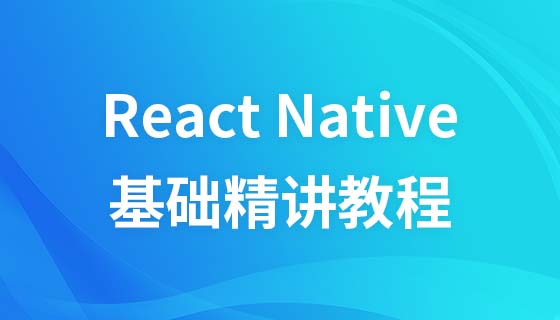在用Reactnative写工程时,默认奇妙的有一种像OC中,或者Java 中或者当前类的私有属性的想法,state 和props都不能满足时,就是ref
它能达到其他语言中持有一个view组件,并且局部的刷新
ref 接受值为string类型的参数或者一个函数function
callback。这一特性让开发者对ref的使用更加灵活。
render() {
return <TextInput ref={(c) => this._input = c} />;
},
componentDidMount() {
this._input.focus();
},
render(){
return <View ref={ (e) => this._view = e } />//将组件view作为参数赋值给了this._view
}
componentDidMount(){
this._view.style = { backgroundColor:'red',width:100,height:200 }
}
需要提醒大家的是,只有在组件的render方法被调用时,ref才会被调用,组件才会返回ref。如果你在调用this.refs.xx时render方法还没被调用,那么你得到的是undefined。
心得:ref属性在开发中使用频率很高,使用它你可以获取到任何你想要获取的组件的对象,有个这个对象你就可以灵活地做很多事情,比如:读写对象的变量,甚至调用对象的函数。
让组件做到局部刷新setNativeProps
有时候我们需要直接改动组件并触发局部的刷新,但不使用state或是props。
setNativeProps 方法可以理解为web的直接修改dom。使用该方法修改 View 、 Text 等 RN自带的组件
,则不会触发组件的 componentWillReceiveProps 、 shouldComponentUpdate
、componentWillUpdate 等组件生命周期中的方法。
'use strict'import React, { Component } from 'react';
import {
AppRegistry,
StyleSheet,
Text,
View,
TextInput
} from 'react-native';
import Dimensions from 'Dimensions';// 屏幕宽度var screenWidth = Dimensions.get('window').width;
class RNRefDetail extends Component {// 构造 constructor(props) {
super(props);// 初始状态this.state = {
textInputValue: ''}; this.buttonPressed = this.buttonPressed.bind(this);
}
buttonPressed() { //当按钮按下的时候执行此函数let textInputValue = 'yuanmenglong';this.setState({textInputValue});//修改文本输入框的属性值this.refs.textInputRefer.setNativeProps({
editable:false});this.refs.text2.setNativeProps({
style:{
color:'blue',
fontSize:30}
});//使文本输入框变为不可编辑 }
render() {return (//ref={'text2'}> //指定本组件的引用名<View style={styles.container}>
<Text style={styles.buttonStyle} onPress={this.buttonPressed}>按我</Text>
<Text style={styles.textPromptStyle} ref="text2">文字提示</Text>
<View>
<TextInput style={styles.textInputStyle}
ref="textInputRefer" value={this.state.textInputValue}
onChangeText={(textInputValue)=>this.setState({textInputValue})}/>
</View>
</View> );
}
}
const styles = StyleSheet.create({
container: {
flex: 1,
justifyContent: 'center',
alignItems: 'center'},
buttonStyle: { //文本组件样式,定义简单的按钮fontSize: 20,
backgroundColor: 'grey'},
textPromptStyle: { //文本组件样式fontSize: 20},
textInputStyle: { //文本输入组件样式width: 150,
height: 50,
fontSize: 20,
backgroundColor: 'grey'}
});
module.exports = RNRefDetail;当点击按钮时,会刷新3个控件的值,但是只是单独去改变,而不是通过改变state状态机的机制来刷新界面,在重复需要多次刷新时使用,普通的时候直接通过state改变即可。 这样用的缺点就是局部改变,回导致状态机混乱。
在用Reactnative写工程时,默认奇妙的有一种像OC中,或者Java 中或者当前类的私有属性的想法,state 和props都不能满足时,就是ref
它能达到其他语言中持有一个view组件,并且局部的刷新
ref 接受值为string类型的参数或者一个函数function
callback。这一特性让开发者对ref的使用更加灵活。
render() {return <TextInput ref={(c) => this._input = c} />;
},
componentDidMount() {this._input.focus();
},需要提醒大家的是,只有在组件的render方法被调用时,ref才会被调用,组件才会返回ref。如果你在调用this.refs.xx时render方法还没被调用,那么你得到的是undefined。
心得:ref属性在开发中使用频率很高,使用它你可以获取到任何你想要获取的组件的对象,有个这个对象你就可以灵活地做很多事情,比如:读写对象的变量,甚至调用对象的函数。
让组件做到局部刷新setNativeProps
有时候我们需要直接改动组件并触发局部的刷新,但不使用state或是props。
setNativeProps 方法可以理解为web的直接修改dom。使用该方法修改 View 、 Text 等 RN自带的组件
,则不会触发组件的 componentWillReceiveProps 、 shouldComponentUpdate
、componentWillUpdate 等组件生命周期中的方法。
'use strict'import React, { Component } from 'react';import {
AppRegistry,
StyleSheet,
Text,
View,
TextInput
} from 'react-native';import Dimensions from 'Dimensions';// 屏幕宽度var screenWidth = Dimensions.get('window').width;class RNRefDetail extends Component {// 构造constructor(props) {super(props);// 初始状态this.state = {
textInputValue: ''}; this.buttonPressed = this.buttonPressed.bind(this);
}
buttonPressed() { //当按钮按下的时候执行此函数let textInputValue = 'yuanmenglong';this.setState({textInputValue});//修改文本输入框的属性值this.refs.textInputRefer.setNativeProps({
editable:false});this.refs.text2.setNativeProps({
style:{
color:'blue',
fontSize:30}
});//使文本输入框变为不可编辑}
render() {return (//ref={'text2'}> //指定本组件的引用名<View style={styles.container}>
<Text style={styles.buttonStyle} onPress={this.buttonPressed}>按我</Text>
<Text style={styles.textPromptStyle} ref="text2">文字提示</Text>
<View>
<TextInput style={styles.textInputStyle} ref="textInputRefer"value={this.state.textInputValue} onChangeText={(textInputValue)=>this.setState({textInputValue})}
/>
</View>
</View>
);
}
}const styles = StyleSheet.create({container: {flex: 1,justifyContent: 'center',alignItems: 'center'},buttonStyle: { //文本组件样式,定义简单的按钮fontSize: 20,backgroundColor: 'grey'},textPromptStyle: { //文本组件样式fontSize: 20},textInputStyle: { //文本输入组件样式width: 150,height: 50,fontSize: 20,backgroundColor: 'grey'}
});module.exports = RNRefDetail;当点击按钮时,会刷新3个控件的值,但是只是单独去改变,而不是通过改变state状态机的机制来刷新界面,在重复需要多次刷新时使用,普通的时候直接通过state改变即可。
这样用的缺点就是局部改变,回导致状态机混乱。
以上就是react native 中View组件中的ref属性介绍的详细内容,更多请关注php中文网其它相关文章!

每个人都需要一台速度更快、更稳定的 PC。随着时间的推移,垃圾文件、旧注册表数据和不必要的后台进程会占用资源并降低性能。幸运的是,许多工具可以让 Windows 保持平稳运行。




Copyright 2014-2025 https://www.php.cn/ All Rights Reserved | php.cn | 湘ICP备2023035733号